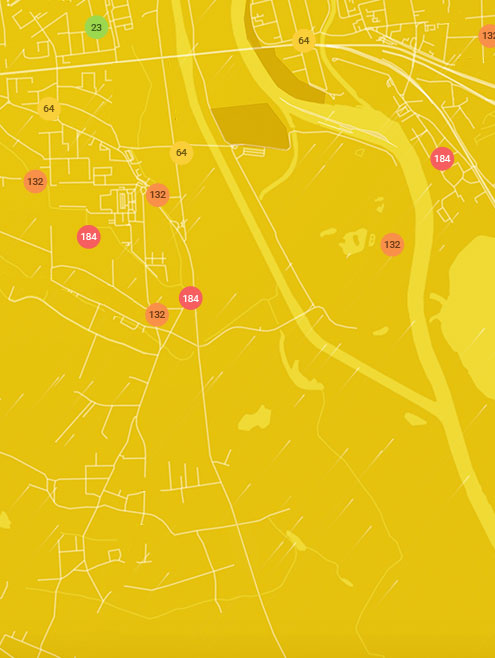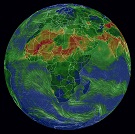Get a monitor and contributor to air quality data in your city.
34.7K people follow this station






AIR QUALITY DATA CONTRIBUTORS
Find out more about contributors and data sources| Weather | Scattered clouds |
| Temperature | 80.6°F |
| Humidity | 74% |
| Wind | 5.7 mp/h |
| Pressure | 29.7 Hg |
| # | city | US AQI |
|---|---|---|
| 1 | San Sai, Chiang Mai | 180 |
| 2 | Doi Saket, Chiang Mai | 176 |
| 3 | Chiang Mai, Chiang Mai | 173 |
| 4 | Chiang Rai, Chiang Rai | 158 |
| 5 | Mae On, Chiang Mai | 158 |
| 6 | Samut Sakhon, Samut Sakhon | 158 |
| 7 | Thawi Watthana, Bangkok | 158 |
| 8 | Bang Bon, Bangkok | 156 |
| 9 | Uttaradit, Uttaradit | 156 |
| 10 | Bang Kruai, Nonthaburi | 154 |
(local time)
SEE WORLD AQI RANKING
| # | station | US AQI |
|---|---|---|
| 1 | Samphanthawong District | 199 |
| 2 | Her Majesty the Queen's 60th Birthday Anniversary Park, Lat Krabang District | 173 |
| 3 | Prawet District | 173 |
| 4 | Thawi Wanarom Park, Thawi Watthana District | 173 |
| 5 | Singapore International School Thonburi | 165 |
| 6 | Sri Nakhon Khuean Khan Park | 164 |
| 7 | Sudjitnivet Village | 163 |
| 8 | Data Entry Group | 161 |
| 9 | DenlaKindergarten | 161 |
| 10 | House of drawing and printmaking | 161 |
(local time)
SEE WORLD AQI RANKINGUS AQI
168
live AQI index
Unhealthy
| Air pollution level | Air quality index | Main pollutant |
|---|---|---|
| Unhealthy | 168 US AQI | PM2.5 |
| Pollutants | Concentration | |
|---|---|---|
| PM2.5 | 89µg/m³ | |
| Avoid outdoor exercise | |
| Close your windows to avoid dirty outdoor air GET A MONITOR | |
| Wear a mask outdoors GET A MASK | |
| Run an air purifier GET AN AIR PURIFIER |
| Day | Pollution level | Weather | Temperature | Wind |
|---|---|---|---|---|
| Saturday, Mar 23 | Moderate 79 AQI US | 93.2° 80.6° | ||
| Sunday, Mar 24 | Moderate 70 AQI US | 93.2° 80.6° | ||
| Monday, Mar 25 | Moderate 65 AQI US | 93.2° 80.6° | ||
| Tuesday, Mar 26 | Moderate 64 AQI US | 95° 82.4° | ||
| Wednesday, Mar 27 | Moderate 63 AQI US | 93.2° 82.4° | ||
| Thursday, Mar 28 | Moderate 68 AQI US | 95° 82.4° | ||
| Friday, Mar 29 | Moderate 69 AQI US | 93.2° 80.6° | ||
| Saturday, Mar 30 | Moderate 68 AQI US | 95° 82.4° |
Interested in hourly forecast? Get the app
Contributor
Government Contributor